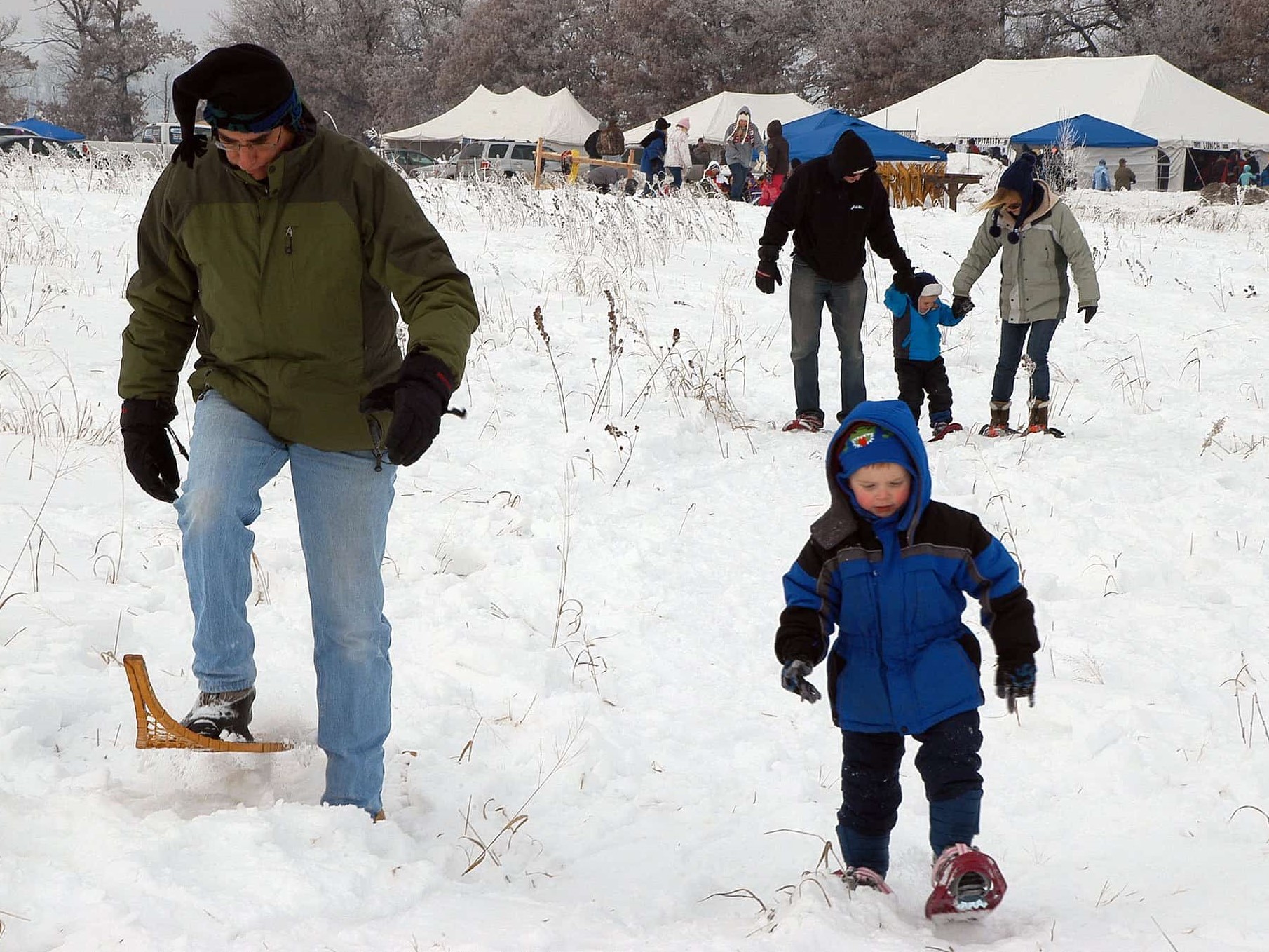How far to hike goes hand in hand with how long to stay out. And, because your pace of travel may vary greatly upon the number of children in tow, it’s best to start with 20-30 minute out-and-back jaunts at first.
At least to start, these short trips will help everyone stay toasty and safe from the wind chill. We find this especially great for bathroom and snack breaks. Additionally, we suggest having a backup plan for when toddlers inevitably lose interest in snowshoeing. For instance, a back carrier or sled, we’ve found the perfect child carriers in our Best Baby Carriers for Snowshoeing post.
Furthermore, depending on the age range of your troop, 20-30 minutes might get you a 1/2 mile out and back. Especially if you’re wearing or pushing small children.
In fact, hiking while wearing toddlers in a carrier snowshoeing isn’t much different than doing so on a normal hike. However, you may want to test it out on snow in your backyard first.
As such, you’ll have to consider their added weight when renting or purchasing snowshoes, as this will affect snowshoe length.

